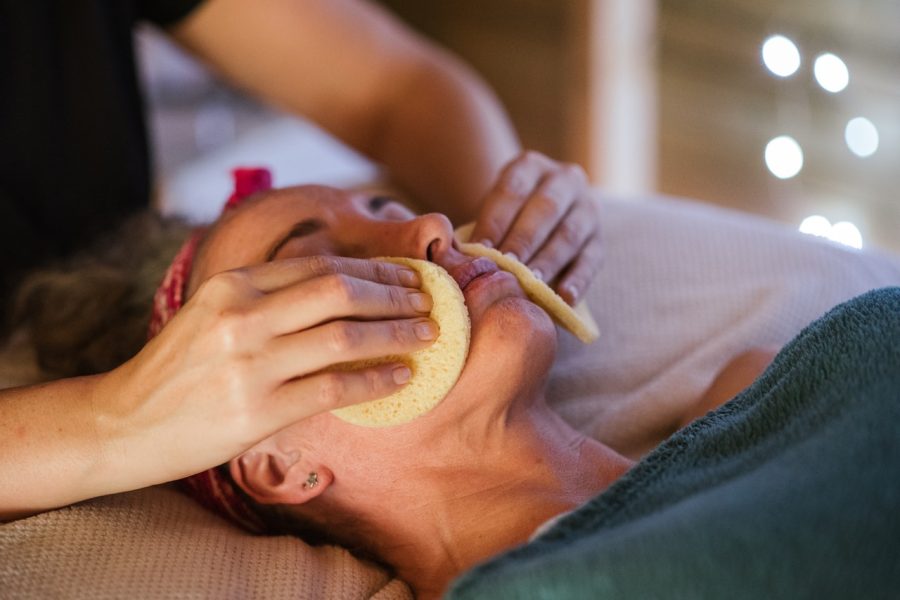
Even though most of us know it’s not the case, there’s still something that sounds a bit intimidating about a chemical peel. The idea can be daunting, it’s true, but a chemical peel is actually a marvellous procedure (if we do say so ourselves).
Modern chemical peels are far more controlled than in days gone by. Sometimes you don’t even need to worry about downtime afterwards. But there’s still plenty of variation in the types of peel available, the depth to which the chemical penetrates, and their benefits.
If you’re curious or considering a chemical peel, read on for everything you need to know before taking the plunge.
What is a chemical peel?
Whoever they may be, the person who named the chemical peel wasn’t being particularly inventive. In fact, it’s all right there in the name.
Chemical peels use chemicals to remove layers of your skin. Some peels are superficial and remove only the surface layers. Others go deeper. If you’re wondering why one might want to try this, the answer is exfoliation.
We all know how important it is to exfoliate, and a chemical peel takes it one step further. Penetrating deeper, chemical peels can help your skin’s cell turnover, which leads to better skin renewal and improved formation of both elastin and collagen.
There are various chemicals that can be used to perform the procedure, including some acids you’re likely familiar with (though in considerably lower concentrations). Common ones include glycolic acid, salicylic acid, and some alpha and beta hydroxy acids (AHAs and BHAs). It all depends on the outcome you’re after.

How a chemical peel benefits you
As you may have guessed, the improved production of collagen and elastin caused by a chemical peel can be effective at softening fine lines and wrinkles. It’s also great for improving the texture of your skin, for a smoothing, clearing effect.
One popular use of chemical peels is to minimise pigmentation. Some people even report a reduction in blackheads and pores that seem smaller and tighter.
Are all chemical peels the same?
In a word, no.
You can categorise most chemical peels into one of four depths.
The most superficial kind (most shallow, you might say), works only on the surface of the skin. This type targets dead skin cells, and you can buy versions of these chemical peels to use at home. When done professionally, in-clinic, these superficial peels penetrate the epidermis only.
The next depth – let’s call it medium-depth – targets both the epidermis and the upper dermis. Then there are deep peels, which go way down to the lower layers of the dermis.
The depth will vary according to your needs, and your practitioner will go through this with you, should you fancy giving it a go.
Keep in mind, different depths come with different downtimes, too. The deeper into your skin the chemical peel penetrates, the longer it will take for your skin to recover – but the results can be worth it.
Is a chemical peel right for your skin?
Chemical peels can work for most skin types, but not all depths work for all people.
If your skin concerns lean toward fine lines, wrinkles and mild sun damage, then superficial chemical peels using hydroxy acids are your best bet. These are also great if you are prone to acne breakouts, or if you struggle with blackheads and whiteheads on a regular basis.
Known as ‘comedones’, blackheads and whiteheads are the way a pimple forms, even if it’s not visible to the naked eye to begin with. By clearing away the fuel that feeds the comedone and turns it into a spot, chemical peels that use salicylic acid can help you manage acne and breakouts.
For skin concerns like rosacea, chemical peels can be a little more tricky. Here, your skin is likely more sensitive, so you’ll benefit more from a much gentler approach.
Skin issues such as pigmentation or irregular texture are ideal candidates for a chemical peel. Keep in mind, though, the depth and chemicals required will vary on a case-by-case basis.

How often should you have a chemical peel?
This really depends on the type of peel you have. Superficial peels are so mild that you’re likely to need more of them, usually between one and four weeks apart. Medium-depth and deep chemical peels are more likely to be one-off sessions.
What’s the downtime like?
Superficial chemical peels are quick, easy, and generally painless – though there may be some slight stinging or a tingling sensation. This will depend on the type of chemical used. Afterwards, your skin may look a little red. Very rarely, you might notice your skin getting a little flaky, though this is usually several days after your treatment.
For a medium-depth peel, there’s usually more downtime. The strength of the chemicals used may leave you with redness, inflammation, flaking and sometimes even crusting. The flaking isn’t immediate, and as with the superficial peels, will show up a few days later. However, it will be considerably more noticeable.
A deep peel is not something to be taken on lightly. Your downtime will be considerably longer, and more extreme – and the risks are higher. They’re not recommended unless absolutely necessary, as you’re guaranteed to be oozing and crusty afterwards. With deep peels, the chances of infection are also increased.
How do you care for your skin after a chemical peel?
First, you listen to your practitioner’s advice. They will know the specifics of the chemicals used, the expected outcome and downtime, and the best way to care for your skin while it’s sensitive and exposed.
Generally speaking, though, be gentle.
Pare back your skincare routine, and cut out any exfoliating acids, scrubs and retinoids that could aggravate your skin. We’d suggest avoiding make-up for a day or two, as well.
Since your skin is more delicate after a chemical peel, it’s more important than ever to protect it wherever possible. That means wearing an SPF of 30 or above for at least four months after the treatment.